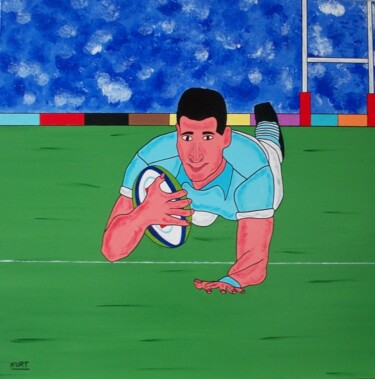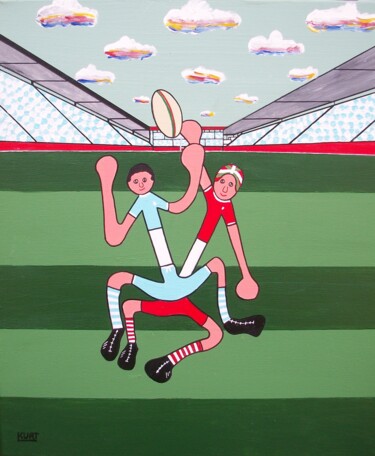
10 オリジナルのアートワーク、限定版、版画:
{スタイル}スタイルを定義する方法は?
ナイーブアートとは?
ナイーブ アートとは何ですか? ナイーブ アートをどのように定義しますか?身廊絵画は、芸術についてあまり知らなかったアンリ・ルソーのような芸術家によって始められた芸術のスタイルです。ほとんどの場合、ネイブ アートは、プロのアーティストが行うトレーニングや教育を受けていない人が作成したビジュアル アートと定義されています。プロのアーティストがこのスタイルを真似ようとすることを「プリミティビズム」と呼びます。
Naive art の定義は?
ネイブアートは通常、プロのアーティストが行う正式なトレーニングや教育を受けていない人によって作成された視覚芸術と定義されています (解剖学、美術史、技術、遠近法、見方)。熟練した芸術家がこのスタイルを真似ようとすることを、プリミティビズム、疑似身廊、または偽身廊と呼ぶことがあります。
民俗芸術とは異なり、ネイブ アートは、特定の人気のある文化的背景や伝統に由来する必要はありません。実際、少なくとも先進国では、印刷革命以降、人気のある版画やその他のメディアを通じて広まった地元の美術の伝統について知らずにはいられません。素朴なアーティストは、グラフィカルな遠近法や構図の慣習などの「美術」の慣習について知っていますが、それらを最大限に活用することはできません。一方、アウトサイダー・アート(「アール・ブリュット」とも呼ばれる)は、同様の背景から生まれたが、主流のアート界とはほとんど関係のない作品を指します.
身廊は子供のように素朴で素直なことで知られ、真似されることも多い。この種の絵画は通常、フラットなスタイルの描画と、奥行きを示すシンプルな方法を備えています。アンリ・ルソーは、1844 年から 1910 年まで生き、パブロ・ピカソによって見出されたフランスの後期印象派であり、「ナイーブ アート」の最も重要な画家の 1 人でした。
この用語が何を意味し、民俗芸術や部外者の芸術などの他の用語と「終わる」場所については、いくつかの意見の相違がありました.ネイブ アートは通常、絵画や彫刻などの独学の芸術家によって作られた美術作品を表すために使用されます。一方、民芸品とは、日常生活で使用できるものを指します。しかし、この違いについては議論されてきました。 「Provincial」は、特に絵画や建物に使用できる別の言葉です。これは主に、伝統的な訓練を受けたアーティストの作品を表すために使用されますが、その作品は偶然に大都市や裁判所の基準に達していません.
ナイーブアートの特徴は?
ネイブ アートは、トレーニングや学位を持っていない (またはあまり受けていない) 部外者による作品と考えられることがよくあります。 20 世紀以前はそうでしたが、今ではナイーブ アートの学校があります。ナイーブ アートは現在、世界中のギャラリーで見ることができる完全に認知されたタイプのアートです。
ネイブ アートの特徴は、特に遠近法の 3 つのルールに従わない場合 (ルネッサンスのプログレッシブ ペインターによって説明されているように)、絵画の形式的な側面にうまく適合しません。
- 物は遠くに行くほど小さくなり、
- 遠ざかるにつれて色が変化する -遠ざかるにつれて細部が不鮮明になる
結果は次のとおりです。
- 遠近法の効果は幾何学的に間違っています (中世の子供の絵や絵のように見えますが、比較はここまでです)。
- 構図のすべてのプランでパターン、洗練されていない色を強く使用し、背景に弱体化はありません。 -影を落とす必要がある背景のものを含め、細部にも同様の注意を払います。
ナイーブアートは複雑ではないので見分けやすいと言われています。しかし、非常に人気があり、よく知られるようになったため、多くの例が「疑似ナイーブ」と呼ばれることがあります。
「疑似ネイブ」または「フェイクネイブ」アートは、より模倣的または自己意識的であり、その作品がオリジナルよりもコピーされているように見えるアーティストの作品です. 「身廊」アートは、アンリ・ルソーやアルフレッド・ウォリスのような美術学校やアカデミーに通っていないアーティストの作品です。
現代では独学が学習方法としてより一般的になっているため、現代のアーティストには厳格なナイーブは見られません。現存するアーティストは、単純な分類を常に好むわけではありませんが、より威厳のあるシグナルが知られるようになるにつれて、これは変わる可能性があります.現在、ハンガリーのケチケメートにはナイーブ アートの美術館があります。コバイカ、セルビア;リガ、ラトビア。ハエン、スペイン。ブラジル、リオデジャネイロ。フランス、ヴィック。そしてパリ。 Gary Bunt、Lyle Carbajal、Gabe Langholtz、Gigi Mills、Barbara Olsen、Paine Proffitt、Alain Thomas はすべて英語を話す生きたアーティストであり、素朴なスタイルを持っていることを認めています。
「プリミティブ アート」は、アートを学んだことのない人がアートを説明するためによく使うもう 1 つの用語です。しかし、歴史的には、西洋の学界が社会的または技術的に「原始的」と見なした文化の芸術を説明するために使用されてきました.ネイティブアメリカン、サハラ以南のアフリカ、太平洋諸島の芸術(部族芸術を参照).これは、「プリミティビズム」と呼ばれる「プリミティブ」に触発された自己認識運動とは異なります。フォークアートは、ネイブアートに似ていますが、同じものではありません。
また、「ナヴィズム」と「プリミティビズム」という用語もあり、これらは通常、ネイブ アートをスタイルとして使用するプロの画家 (ポール ゴーギャン、ミハイル ラリオノフ、パウル クレーなど) を表すために使用されます。
素朴な絵の特徴は?
ネイブアートは、専門的な訓練を受けていない、または学位を取得していない人々によって作成された芸術を説明するために使用されることがあります. 20世紀以前はそうでしたが、今では身廊絵画のアカデミーがあります。現在、ナイーブ アートは、世界中のギャラリーで見ることができる有名な芸術形式です。絵画の形式的な部分は、特に遠近法の 3 つのルールに従わないという点で、身廊を構成するものと奇妙に似ています。
・物は遠くに行くほど小さくなります。
・色から遠ざかるにつれて、鮮やかさが失われます。
-遠ざかるにつれて、詳細が不明確になります。
その結果の 1 つは、遠近法の効果が幾何学的な観点から間違っているということです。どの構図にも背景の弱まりはなく、パターンも多い。背景の暗い部分も含めて、すべてのディテールに同じ量の注意が払われました。
身廊は細かい部分が少ないのでわかりやすいと言われています。しかし、それは非常に有名なスタイルになっているため、多くの作品は疑似身廊またはプリミティビズムのカテゴリーに入れることができます.独学は学習方法としてますます人気が高まっているため、今日のアーティストには厳格な素朴さはあまり見られません。
現存するアーティストは単純な分類を常に受け入れるとは限りませんが、より威厳のあるシグナルが利用可能になるにつれて、これは変わる可能性があります.
Discover contemporary artworks on ArtMajeur
Contemporary art is a vibrant constellation of artistic expressions. This creative universe encompasses a wide array of mediums, from paintings, sculpture, and photography to drawing, printmaking, textile art, and digital art, each medium a star shining with its own distinct radiance. Artists use diverse supports and materials to bring their visions to life, such as canvas, wood, metal, and even innovative digital canvases for the creation of virtual masterpieces.
A contemporary painting, for instance, may weave its story through the masterful strokes of acrylic or oil, while a contemporary sculpture might sing its song in the language of stone, bronze, or found objects. The photographic arts capture and manipulate light to produce striking images, while printmaking employs techniques like lithography and screen-printing to produce multiples of a single, impactful image. Textile art plays with fabrics and fibers, whereas digital art pushes the boundaries of creation with innovative technology.
The allure of contemporary art lies in its boundary-pushing nature, its relentless quest for experimentation and its constant reflection of the evolving human experience. This boundless creativity, coupled with its strong social and personal commentary, makes every piece of contemporary art a unique emblem of its time, a mirror held up to the realities and dreams of our complex world. It whispers to us, moves us, provokes thought, and kindles a deep emotional response, stirring the soul of anyone willing to listen. It is, indeed, the language of emotions and ideas, spoken in the dialect of our era.

©2020 Didier Dordeins
Origins and history of contemporary art
The story of contemporary art unfolds in the mid-20th century, marked by seismic shifts in artistic expression. Post-World War II, around the 1950s and 1960s, artists began experimenting beyond traditional confines, challenging the norms of what art could be. This revolutionary epoch birthed myriad new movements and artistic forms such as abstract expressionism, pop art, and minimalism. Paintings, once confined by realism, embraced abstraction, as artists used color and form to express emotions and ideas. Notable periods like the advent of pop art in the late 1950s and early 1960s saw artworks mimicking popular culture and mass media, reflecting society’s shifting focus.
The sculptural arts, too, witnessed a metamorphosis. Sculptors started to experiment with new materials and forms, often creating artworks that interacted with the viewer and the surrounding space, fostering a sense of engagement. Drawing, a timeless practice, also evolved, with artists incorporating innovative techniques and concepts to redefine its role in contemporary art.
Photography, a relatively new medium, emerged as a powerful tool in the contemporary art landscape. Born in the 19th century, it truly came into its own in the latter half of the 20th century, blurring the lines between fine art and documentation. Printmaking, a practice dating back to ancient times, saw renewed interest and experimentation with techniques like lithography, etching, and screen printing gaining prominence.
The realm of textile art expanded dramatically, as artists began to appreciate the versatility and tactile quality of fabric and fibers. Artists began using textiles to challenge the boundaries between fine art, craft, and design.
The dawn of digital technology in the late 20th century heralded a new age for contemporary art. Digital art emerged as artists started leveraging new technologies to create immersive, interactive experiences, often blurring the line between the virtual and the physical world.
Through these transformative periods, the essence of contemporary art has remained the same: a dynamic, evolving reflection of the times we live in, continually pushing boundaries and embracing the new, always questioning, always exploring.
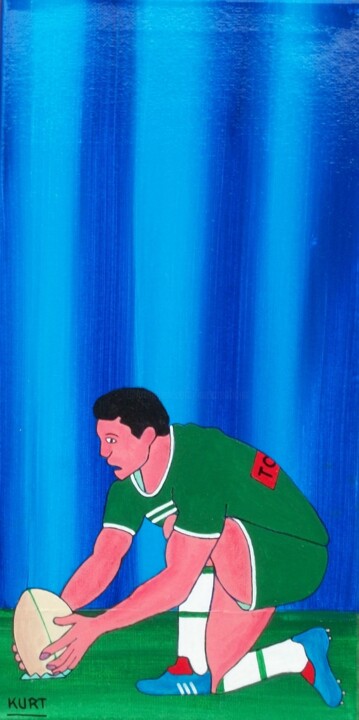
©2018 Didier Dordeins
Evolutions of theses contemporary works in the art market
As we navigate through the 21st century, the dynamic landscape of contemporary art continues to evolve and expand, reflecting our ever-changing world. Contemporary paintings, once primarily confined to two-dimensional canvases, now embrace a multitude of forms and techniques, ranging from mixed media installations to digital creations, each piece a rich a weaving of thoughts, emotions, and narratives. Sculpture, too, has ventured far beyond traditional stone and bronze, with artists incorporating light, sound, and even motion, embodying the ephemerality and flux of the modern world.
Photography, in the hands of contemporary artists, has expanded its horizons, seamlessly blending with digital technology to create breathtaking imagery that challenges our perception of reality. Drawing, as well, has transcended the borders of paper, incorporating multimedia elements and exploratory techniques to redefine its role in the artistic discourse. Printmaking continues to flourish, with contemporary artists using traditional methods in innovative ways to deliver potent social and personal commentaries.
Textile art, once considered a craft, now holds a prominent place in the contemporary art world, with artists using it to explore issues of identity, tradition, and cultural heritage. Meanwhile, digital art, the newest member of the contemporary art family, has revolutionized the way we create and interact with art, presenting immersive experiences that blur the boundary between the virtual and the physical.
These diverse forms of contemporary art hold significant value in the current art market, not only due to their aesthetic appeal but also their ability to encapsulate and communicate complex ideas and emotions. Collectors, curators, and art lovers worldwide seek these works, drawn to their inherent dynamism, their innovative use of materials, and their eloquent expressions of our shared human experience. As a testimonial to our times, these contemporary artworks encapsulate the pulse of our society and the resonance of individual voices, forever etching our collective narrative into the annals of art history.
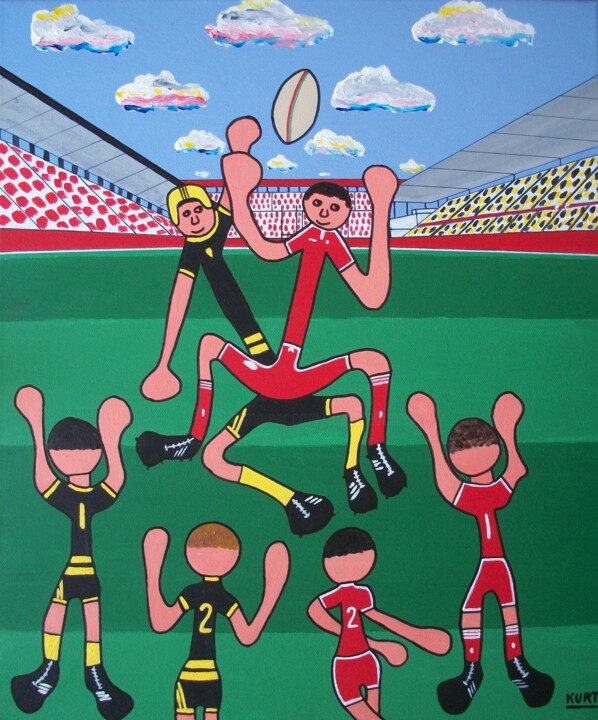
©2016 Didier Dordeins
Famous Contemporary Artists
As we delve into the vibrant realm of contemporary art, we encounter an array of artists who shape this dynamic field. Each a master in their medium - painting, sculpture, photography, drawing, printmaking, textile, or digital art - they push artistic boundaries, reflecting our era and challenging perceptions. Let’s explore these remarkable contributors and their groundbreaking works.
1. Gerhard Richter - Known for his multi-faceted approach to painting, Richter challenges the boundaries of the medium, masterfully oscillating between abstract and photorealistic styles. His works, whether featuring squeegee-pulled pigments or blurred photographic images, engage in a fascinating dialogue with perception.
2. Jeff Koons - A significant figure in contemporary sculpture, Koons crafts monumental pieces that explore themes of consumerism, taste, and popular culture. His iconic balloon animals, constructed in mirror-polished stainless steel, captivate with their playful yet profound commentary.
3. Cindy Sherman - An acclaimed photographer, Sherman uses her lens to explore identity and societal roles, particularly of women. Renowned for her conceptual self-portraits, she assumes myriad characters, pushing the boundaries of photography as a medium of artistic expression.
4. David Hockney - Hockney, with his prolific output spanning six decades, is a pivotal figure in contemporary drawing. His bold use of color and playful exploration of perspective convey an intoxicating sense of joy and an unabashed celebration of life.
5. Kiki Smith - An innovative printmaker, Smith’s work explores the human condition, particularly the female body and its social and cultural connotations. Her etchings and lithographs speak to universal experiences of life, death, and transformation.
6. El Anatsui - A master of textile art, Anatsui creates stunning tapestry-like installations from discarded bottle caps and aluminum scraps. These shimmering, flexible sculptures blend traditional African aesthetic with contemporary art sensibilities, speaking to themes of consumption, waste, and the interconnectedness of our world.
7. Rafael Lozano-Hemmer - A leading figure in digital art, Lozano-Hemmer utilizes technology to create interactive installations that blend architecture and performance art. His work, often participatory in nature, explores themes of surveillance, privacy, and the relationship between people and their environments.
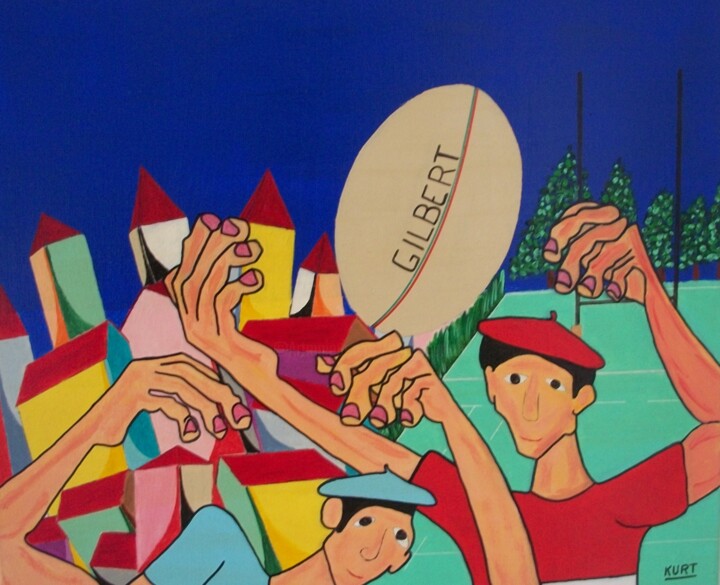
©2015 Didier Dordeins
Notable contemporary artworks
The contemporary art landscape is a dynamic patchwork of diverse expressions and groundbreaking ideas, each artwork a unique dialog with its audience. Here are a selection of some renowned contemporary artworks, spanning various media such as painting, sculpture, photography, drawing, printmaking, textile art, and digital art, that have profoundly influenced this vibrant movement.
"Cloud Gate" by Anish Kapoor, 2006 - This monumental stainless steel sculpture, also known as "The Bean," mirrors and distorts the Chicago skyline and onlookers in its seamless, liquid-like surface, creating an interactive experience that blurs the line between the artwork and the viewer.
"Marilyn Diptych" by Andy Warhol, 1962 - An iconic piece of pop art, this silkscreen painting features fifty images of Marilyn Monroe. Half brightly colored, half in black and white, it reflects the dichotomy of celebrity life and its influence on popular culture.
"Rhein II" by Andreas Gursky, 1999 - This photographic artwork, a digitally-altered image of the Rhine River, is celebrated for its minimalist aesthetic. It strips the landscape to its bare essentials, invoking a sense of tranquility and vastness.
"Black Square" by Kazimir Malevich, 1915 - A revolutionary painting in the realm of abstract art, this piece, featuring nothing more than a black square on a white field, challenges traditional notions of representation, symbolizing a new era in artistic expression.
"Puppy" by Jeff Koons, 1992 - This giant sculpture, a West Highland Terrier blanketed in flowering plants, explores themes of innocence, consumer culture, and the interplay between high art and kitsch. It’s a delightful blend of traditional sculpture and garden craft.
"Re-projection: Hoerengracht" by Ed and Nancy Kienholz, 1983-1988 - A room-sized tableau representing Amsterdam’s red-light district, this work combines elements of sculpture, painting, lighting, and found objects. It engages viewers in a stark commentary on commodification and objectification.
"Untitled" (Your body is a battleground) by Barbara Kruger, 1989 - This photomontage, combining black-and-white photography with impactful text, explores issues of feminism, identity, and power. Its potent, confrontational message is a prime example of the power of text in contemporary visual art.
"For the Love of God" by Damien Hirst, 2007 - This sculpture, a platinum cast of a human skull encrusted with 8,601 diamonds, probes themes of mortality, value, and the human fascination with luxury and decadence. It’s a compelling blend of macabre and magnificence.
"Physical impossibility of Death in the Mind of Someone Living" by Damien Hirst, 1991 - This artwork, featuring a tiger shark preserved in formaldehyde, blurs the line between traditional sculpture and biological specimen. It prompts viewers to contemplate mortality and nature’s ferocity.
"One and Three Chairs" by Joseph Kosuth, 1965 - A piece of conceptual art, it presents a physical chair, a photograph of a chair, and a dictionary definition of a chair, thus exploring the relationship between language, picture, and referent in art.
These pieces, in their diversity, exemplify the rich tapestry of contemporary art, each piece a unique commentary on our world and a testament to the limitless potential of creative expression.


Didier Dordeins
キャンバスのアクリル | 19.7x23.6 in
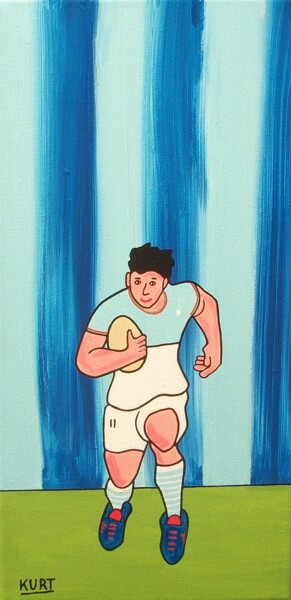
Didier Dordeins
キャンバスのアクリル | 15.8x7.9 in
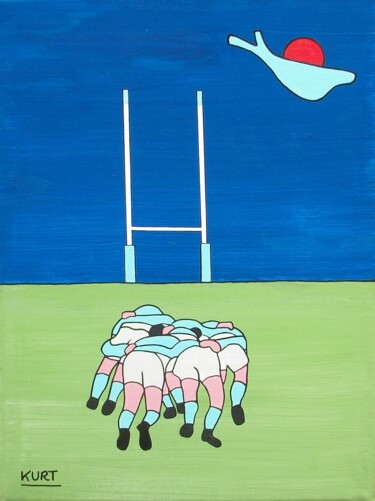
Didier Dordeins
キャンバスのアクリル | 15.8x11.8 in

Didier Dordeins
キャンバスのアクリル | 15.8x7.9 in

Didier Dordeins
キャンバスのアクリル | 19.7x23.6 in
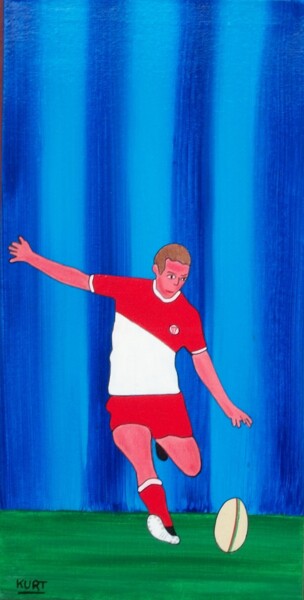
Didier Dordeins
キャンバスのアクリル | 15.8x7.9 in

Didier Dordeins
キャンバスのアクリル | 23.6x19.7 in
